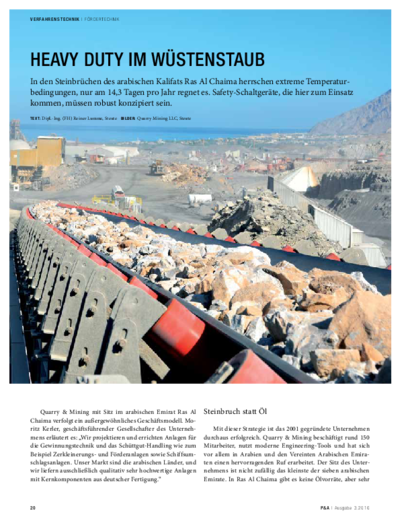
Heavy duty in desert dust
In the quarries of the Arabian caliphate Raps Al Chaim, temperatures are extreme and it only rains on 14.3 days a year. Any safety switchgear used here must be robust by design.
Source: P&A (03/2016)
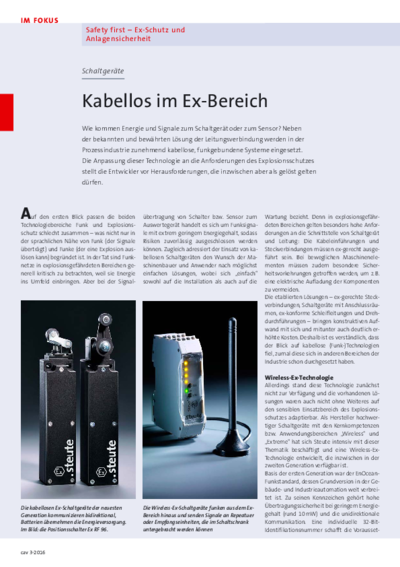
Ex zones without cables
How do switches and sensors get their power and signals? In addition to the tried-and-tested cabled connections, process engineers are increasingly using cable-free, radio-controlled systems. Adaptation of this technology to the requirements of explosion protection has been a challenge for developers, but one which can now be considered met.
Source: CAV (03/2016)

New low-energy wireless technology - Wireless foot controls
A new series of battery-driven foot controls uses the latest generation of a wireless technology developed especially for medical equipment. Its power consumption is low, meaning that conventional and not rechargeable batteries can be used.
Source: medizin & technik (06/2018)
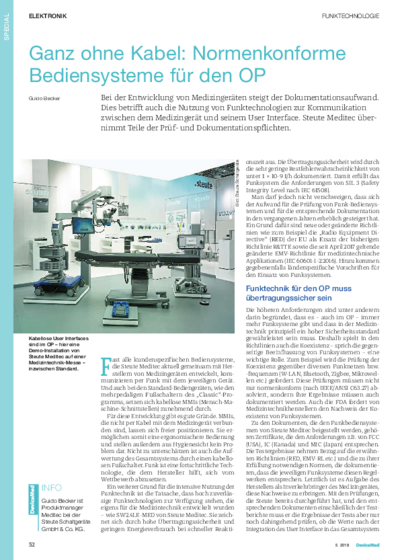
Completely cable-free: approved user interfaces for the OR
The amount of documentation required in the development of medical equipment is steadily increasing. This is also true of wireless technologies for communication between medical devices and their controls. steute Meditec can assist customers with mandatory tests and documentation.
Source: DeviceMed (05/2018)
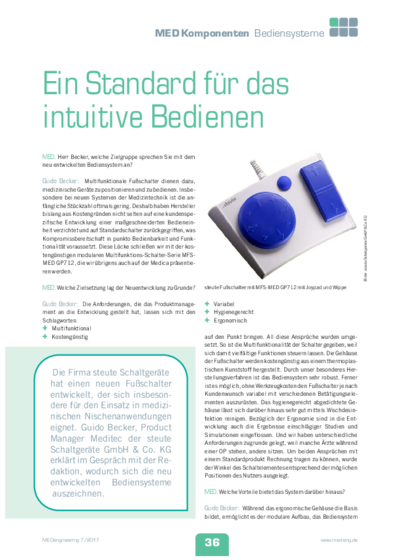
A standard for intuitive operation
The steute Schaltgeräte company has developed a new foot control particularly suited to niche medical applications. Guido Becker, Product Manager Meditec at steute Schaltgeräte GmbH & Co. KG, explained the features of these newly developed interfaces to our editorial team.
Source: MEDengineering (07/2017)
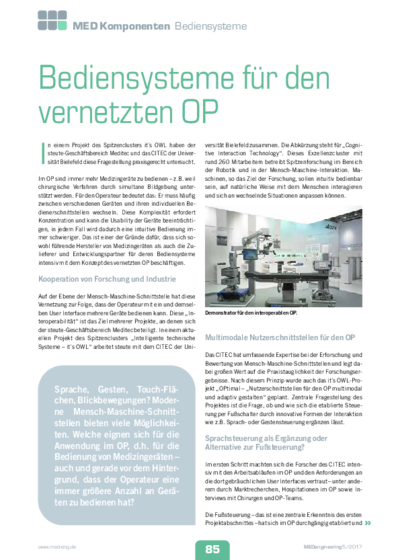
User interfaces for an integrated OR
A practice-oriented approach has been taken to this topic by the steute business unit Meditec and CITEC (University of Bielefeld) in a project of the “it´s OWL” excellence cluster.
Source: MED-Engineering (05/2017)
